



The Jal Jeevan Mission has raised rural tap water access from 17% in 2019 to over 81% by October 2025, saving 5.5 crore hours daily and averting 4 lakh deaths. Through community participation and digital monitoring, it strengthens sustainability, water quality, and rural empowerment nationwide.
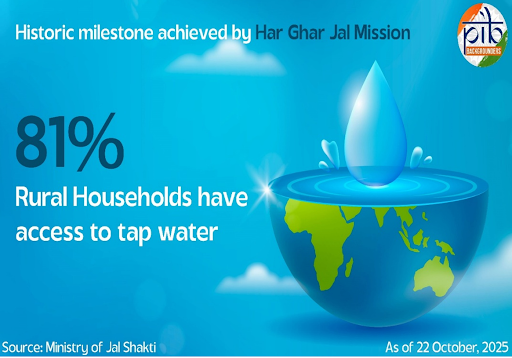
Copyright infringement not intended
Picture Courtesy: PIB
As of October 22, 2025, the Jal Jeevan Mission (JJM) has provided tap water connections to over 15.72 crore (more than 81%) of rural households.
It was launched in 2019 under the Ministry of Jal Shakti, to provide every rural household with a functional tap connection delivering 55 litres of safe drinking water per person per day by 2024.
The 'Har Ghar Nal Se Jal' initiative aims to provide functional household tap connections (FHTCs) to all rural homes, schools, and Anganwadi centers.
Source Sustainability: Achieved through mandatory groundwater recharge, greywater management, and rainwater harvesting.
Community Approach: Promotes a "Jan Andolan" (people's movement) for water, fostering local ownership and participation.
Financial Structure: Estimated cost is Rs. 3.60 Lakh Crore, with the central government contributing Rs. 2.08 Lakh Crore. (Source: PIB)
Decentralized Implementation: Village Water & Sanitation Committees (VWSC) or Paani Samitis (sub-committees of Gram Panchayats) are responsible for planning, implementation, and operation/maintenance.
Community Contribution: Communities are required to contribute 5-10% of the capital cost in cash, kind, or labor.
Water Quality Monitoring: Involves robust monitoring, laboratory testing, and training rural women to use Field Testing Kits (FTKs).
Retrofitting & Modernization: Existing piped water supply schemes are upgraded to ensure FHTCs and improve service levels.
Capacity Building: The 'Nal Jal Mitra Programme' and other training initiatives develop skilled personnel for Operations & Maintenance (O&M).
Technological Integration: Uses Geographic Information System (GIS) for water asset mapping and a Digital Registry with unique IDs for Rural Piped Water Supply Schemes (RPWSS) for transparency and data-driven monitoring.
Household Coverage
The number of rural households with tap water connections has increased from 3.23 crore (16.71%) in August 2019 to over 15.72 crore (more than 81%) by October 22, 2025. (Source: PIB)
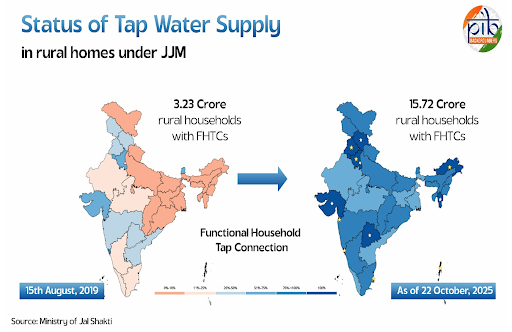
Universal Coverage in States/UTs
Eleven States and Union Territories, including Goa, Haryana, Gujarat, Punjab, Himachal Pradesh, Arunachal Pradesh, Andaman & Nicobar Islands, Dadra & Nagar Haveli and Daman & Diu, Puducherry, and Telangana, have achieved 100% tap water connectivity. (Source: PIB)
Institutional Coverage
Over 9.23 lakh rural schools and 9.66 lakh Anganwadi centers nationwide now have tap water supply. (Source: PIB)
Community Engagement
Around 5.32 lakh Paani Samitis have been constituted at the Gram Panchayat level to manage water supply systems. (Source: PIB)
About 24.80 lakh women have received training to use FTKs in 5.07 lakh villages, enhancing community-led water quality monitoring. (Source: PIB)
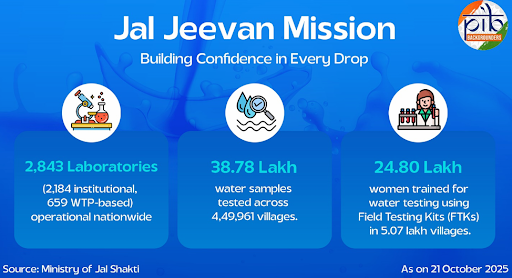
Improve Public Health
Improve public health by providing access to safe drinking water. The WHO estimates it could prevent 400,000 deaths from diarrheal diseases and save 14 million Disability Adjusted Life Years (DALYs).
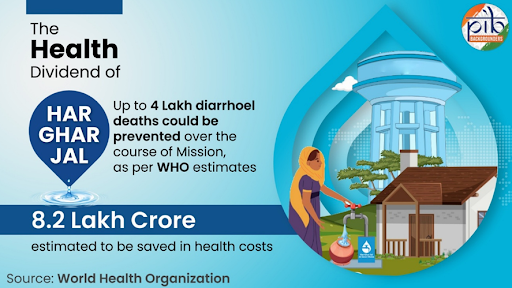
Women Empowerment and Reduced Drudgery
The World Health Organization (WHO) estimates JJM saves over 5.5 crore hours daily, for women, allowing them more time for education, skill development, and income-generating activities.
Women’s active participation in VWSCs and water quality testing enhances their role in local governance.
Economic Benefits and Employment Generation
The Indian Institute of Management Bangalore (IIMB), in partnership with the International Labour Organization (ILO), estimates that JJM's implementation will generate 59.9 lakh person-years of direct and 2.2 crore person-years of indirect employment.
Environmental Sustainability
JJM ensures sustainable water management via rainwater harvesting, groundwater recharge, and greywater management, promoting responsible water use, reducing environmental impact, and promoting ecological balance and climate resilience.
Enhanced Ease of Living and Dignity
Direct access to household water improves the quality of life for rural families by providing dignity, convenience, and reducing the physical burden of water collection, which in turn promotes better hygiene and sanitation.
Core Water Source Issues
Operational and Implementation Hurdles
Community and Financial Sustainability
Geographical Diversity
Strengthening Operational & Maintenance Frameworks
Holistic Water Resource Management:
Robust Water Quality Assurance
Empowering Community Participation
Leveraging Technology for Transparency and Efficiency:
Addressing Financial Sustainability
Adaptive and Decentralized Planning
Inter-sectoral Convergence
Conclusion
The Jal Jeevan Mission, vital for water security and rural livelihoods, needs sustained political will, community engagement, technology, and a focus on long-term sustainability to achieve permanent "Har Ghar Jal."
Source: PIB
|
PRACTICE QUESTION Q. "The Jal Jeevan Mission is not merely an infrastructure project but a social revolution aimed at ensuring gender justice and improving public health." Elaborate. 250 words |
The Jal Jeevan Mission (JJM) was launched in 2019, to provide a Functional Household Tap Connection (FHTC) with safe and adequate drinking water to every rural household in the country. The mission aims to supply 55 liters of water per person per day of a prescribed quality on a regular and long-term basis.
The Jal Jeevan Mission (JJM) uses a decentralized, community-led strategy, involving Panchayati Raj Institutions (PRIs) and Village Water and Sanitation Committees (VWSCs). This approach includes village action plans, in-village infrastructure, local management, and partnerships with NGOs for community engagement.
The mission has positively impacted health by reducing waterborne diseases, empowered women by freeing up time previously spent fetching water, and fostered socio-economic development through job creation and improved rural life quality.
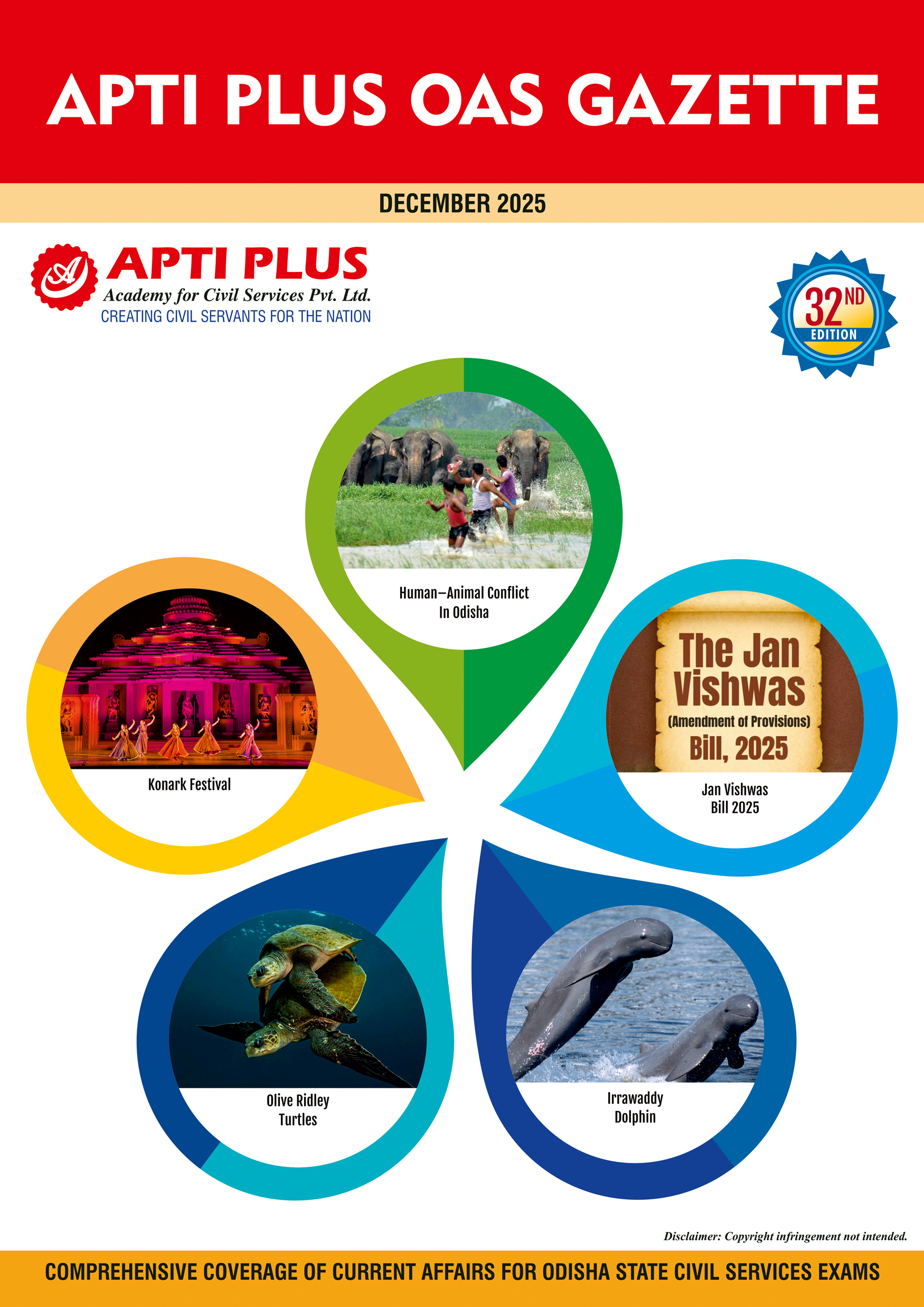





© 2025 iasgyan. All right reserved